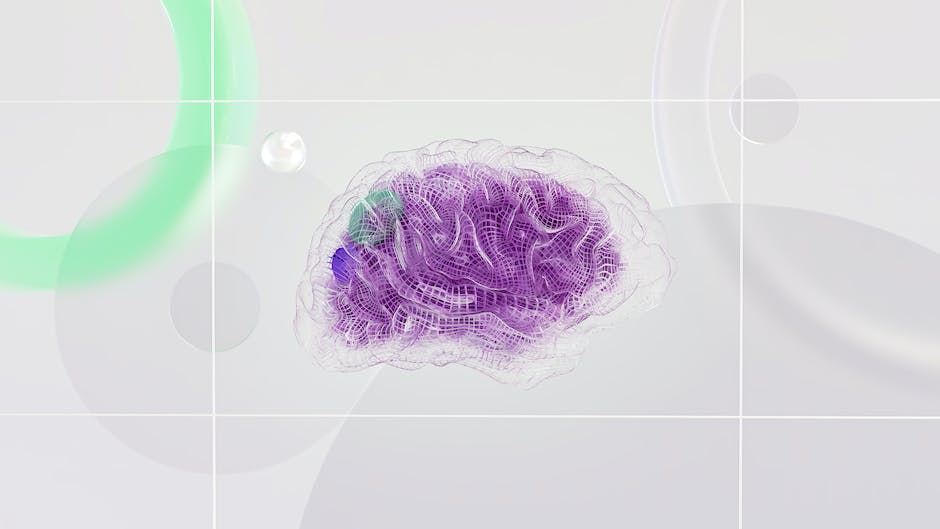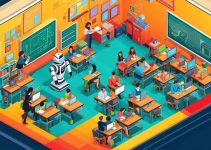The use of AI in education started to gain prominence with the introduction of ChatGPT in November 2022. Since that time, this disruptive technology pervaded the life of people around the globe. How can the education that we know adapt to this development? This article revolves around this topic given the significant impact of another human invention that changes the educational landscape.
Artificial Intelligence, a ubiquitous phrase resonating within modern society, has infiltrated various industries and the education sector is no exception. In this era where AI holds boundless potential, understanding its core elements, including machine learning and deep learning, serves as stepping stones for leveraging it in our lives.
As someone in the vibrant world of education, it is crucial to comprehend AI’s functionalities and mechanism, delineating the strong foundation necessary for its incorporation and successful utilization. We delve into how AI intersects with education, examining its implications on tutoring systems, personalized learning environments, and administrative tasks.
Furthermore, this piece explores the practical aspects of AI implementation, discussing technological prerequisites, preparatory steps like data collection, and potential challenges that one could encounter during this transformative process.
What is Artificial Intelligence?
An Examination of the Constituents and Functionality of Artificial Intelligence
Artificial Intelligence (AI), a term that has turned into a linchpin of modern conversations, extends far beyond the realm of science-fiction narratives and harbors profound implications for real-world applications. This intricate concept deserves an elite stratum of comprehension, not simply because of its intricacies, but due to its pivotal role in shaping our future.
At its core, artificial intelligence refers to the capacity of a machine or computer-based system to emulate human intelligence processes. It strives to imitate innate human capabilities such as understanding, reasoning, learning, problem-solving, and perception. The resultant effect is a paradigm shift in mundane computational capabilities, leveraging technology beyond inanimate calculations to a realm where it can engage and adapt experiences in real-time.
Artificial intelligence refers to the capacity of a machine or computer-based system to emulate human intelligence processes.
A multidimensional construct, AI encapsulates two fundamental categories: Narrow AI and General AI. Narrow AI denotes systems designed to execute specific tasks, such as voice recognition – a common feature witnessed in virtual assistants such as Siri or Alexa. Contrarily, General AI represents systems that can perform any intellectual task with the same acumen as a human being, which remains largely theoretical and a challenge yet to be conquered.
AI systems, while perusing through their decision-making process, rely primarily on two techniques: Machine Learning (ML) and Deep Learning. Machine Learning is a data-driven approach where the system analyzes vast amounts of data, identifies patterns, and makes decisions or predictions based on the acquired knowledge without explicit programming.
Deep Learning, a subset of machine learning, incorporates artificial neural networks with multiple abstraction layers. These networks attempt to mimic the human brain—observing the world in tiny hierarchical constructs. As the system ingests more data, it incrementally improves, thus maximizing the probability of predicting correct results based on learned patterns.
AI operates in sync with what is referred to as ‘supervised learning’. The system learns from past computations to produce reliable, repeatable decisions. It’s a data-focused process, with the algorithms gleaning knowledge from the input and sharing it across the network.
In essence, artificial intelligence is an unparalleled amalgamation of in-depth understanding, sophisticated algorithms, elaborate data, and a relentless pursuit of mimicking human cognitive capacities. The journey from recognizing computational patterns to making informed decisions signifies the power of AI as a catalyst for a transformative future.
At the intersection of human intellect and machine learning, AI is redefining the parameters of possibilities, laying grounds for an unforeseen tomorrow. This exploration into the nature and functioning of artificial intelligence serves to illustrate the breadth and depth of a technology that is poised to redefine the fabric of societal norms and human capabilities.
AI in Education: 5 Applications
Expert research, observations, and implementations indicate that educators are increasingly harnessing the power of artificial intelligence for educational purposes. This AI integration is enhancing the educational domain in multiple aspects, from classroom teaching methods and individualized tutoring to administrative tasks and curriculum development.
1. Tailors Learning to Individuals
A particular area of notable advancement is personalized learning, where artificial intelligence plays a key role. By analyzing the learning styles and the grasp of subjects by individual students, AI systems can tailor learning content accordingly. Personalized learning champions the concept of student-centered education, with AI acting as a pivot.
Such AI-supported guidance facilitates catering to individual learning paths. With its ability to adapt to the student’s pace and level of understanding, AI is revolutionizing personalized learning and making a marked impact on the effectiveness of education.
Essentially, AI systems can scrutinize a student’s grasp of concepts and modify the learning content accordingly. This enables more targeted teaching, thereby enhancing individual educational outcomes. Also, it offers a breadth of opportunity for off-campus learning, an aspect bolstered amidst the recent pandemic distress.
2. Facilitates Formative Assessments
AI is also altering the traditional formative assessments that teachers have traditionally utilized and is equipping educators with tools to monitor student progress in real-time. By deploying AI systems, teachers can gain accurate and up-to-date insights into a student’s understanding. This feature enhances the teacher’s capabilities to identify knowledge gaps and adjust teaching strategies accordingly.
Through a combination of advanced algorithms and comprehensive data collection, AI can deliver an ongoing evaluation of student understanding, providing instant feedback, and adapt lessons to meet their needs. This encourages an ongoing dialogue about student performance, leading to better engagement and understanding.
3. Accommodates Students with Special Needs
Artificial intelligence is also facilitating significant progress in accommodating students with special needs. AI-powered systems can offer specially designed learning models that cater to students’ differentiated needs, from those with learning disabilities to individuals with physical impairments. This application of AI not only aids in delivering a more comprehensive educational experience to these students but also fosters inclusivity in classrooms.
For learners with special needs, for instance, AI can personalize their learning experience – think speech-to-text conversions or customized content designed to suit specific learning patterns. AI not only provides inclusion but also delivers a quality education for those who may not have previously had access.
4. Automates Administrative Tasks
Among the other classroom applications, AI tools are being implemented to automate administrative tasks. Utilization of AI-enabled systems can automate tedious tasks such as grading assignments or monitoring student conduct. Automation of such tasks frees the teacher’s time to focus more on instruction and student interaction, thereby enhancing the overall teaching process.
The adoption of AI-powered systems can automate processes such as roster scheduling, data management, and reports generation. By relegating these mundane and repetitive tasks to AI, institutions save precious time and assets, allowing more focus on the education and support of students.
5. Assists in Curriculum Development
Furthermore, AI applications are prominent in curriculum development and resource allocation. By deploying machine learning algorithms, academic institutions can make informed decisions about the allocation of resources, curriculum alterations, optimizing schedules, and more.
AI’s unmatched analytic capabilities allow for the analysis of hardship areas in the curriculum, providing critical insights to refine educational models and strategies. This would allow schools to tailor their programs more effectively, accommodating the specific needs of the student population and improving overall performance indices.
Drawbacks of AI in Education
However, along with these promising uses of AI in education, it is crucial to acknowledge the necessary infrastructure, ethical considerations, and the potential drawbacks, such as reliance on data and algorithms which may unintentionally reinforce societal biases. Success in applying AI will largely depend on how academia navigates these challenges.
Reliance on data and algorithms may unintentionally reinforce societal biases.
Indeed, the scope of AI in education is multi-faceted and expansive, and with thoughtful application, it beholds the potential to redefine teaching methodologies and learning experiences. As AI continues to evolve, the field of education will undoubtedly witness an even more transformative impact. This exploration epitomizes the interfusion of artificial intelligence and education, revealing a dynamic blend of technical and humanistic approaches to knowledge dissemination.

Implementing Artificial Intelligence in Education
From an infrastructure perspective, the integration of AI in education would mandate an upgrade to accommodate these systems. Institutions may need to remodel both physical and cyber infrastructures, and potentially reallocate resources to ensure the seamless implementation of AI solutions. Furthermore, digital literacy and training in the use of AI tools would be necessary for both educators and students.
An undeniable concern would be the ethical considerations that come with AI implementation. Data privacy, valid consent, and potential algorithmic bias are issues that need addressing before the wholesale adoption of AI in educational institutions. Consequently, rigorous ethical guidelines and legal frameworks have to be put in place.
Conclusion
In conclusion, the marriage of AI and education represents a dynamic blend of technical and humanistic approaches. While AI’s transformative impact on teaching methodologies is palpable, it by no means can replace the human touch. The ideal modus operandi would be a harmony where AI takes care of the quantitative tasks while instructors focus on forming qualitative connections, equipping students with not just knowledge but also the essential skills to navigate through life.
Just as much as education needs AI, AI needs education. By building on each other’s strengths, education can become more accessible, tailored, and inclusive, taking us one step closer towards an equitable, knowledge-based society.
Weaving a future where AI and education walk hand-in-hand can bring forth impactful transformations. The potential of AI in reshaping tutoring systems, personalizing the learning experience, and predicting academic progress is awe-inspiring and carries significant implications for educators, students, and the wider educational ecology.
But, just like any innovation, AI’s integration into education requires careful planning, apt technology, and a comprehensive understanding of the AI ecosystem. Through deliberate efforts in overcoming obstacles and a proactive approach in harnessing AI’s full potential, we inch closer to an educational setting that effectively utilizes the limitless power of AI to inspire learning, growth, and progress.
After all, the intersection of AI and education isn’t just about technology—it’s about enriching human potential through more adaptive, personalized, and efficient learning environments.

